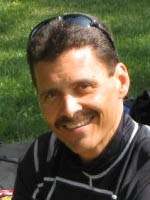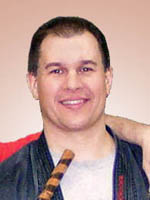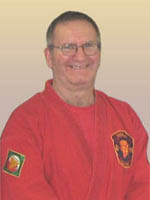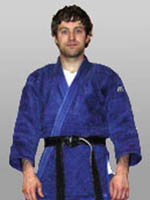History
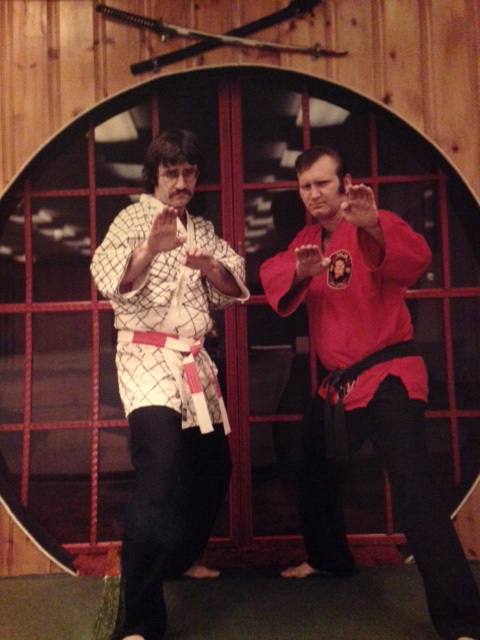
Ninja-Ryu History
The roots of Ninja-Ryu Jiu-Jitsu can partly be traced to a form of “combat” Judo that predated sport Judo as practiced at the Kodokan in Japan. This early form of Judo placed greater emphasis on groundwork (newaza) and included a number of body, leg, head, arm locks, and choking techniques that were later discarded as Judo evolved into a sport. The judoka and prizefighter Mitsuyo Maeda had trained extensively in this type of Judo, and taught it to Carlos Gracie from 1917 till about 1923.
Early in the twentieth century, Judo and Jiu-Jitsu were spread in Europe partly due to the efforts of another early Judoka, Mikonosuke Kawaishi. Kawaishi opened Judo/Jiu-Jitsu schools in London (1931); Paris (1936); and also spread them to Holland, and Belgium. He broke away from the French Judo Federation in 1957, and continued to teach, emphasizing newaza and including techniques which had been banned in sport Judo. He began referring to his art simply as Jiu-Jitsu, dropping the reference to Judo, in order to distinguish it from the sport being promoted by the Kodokan.
In Eastern Canada, Jiu-Jitsu was spread by Henk Jenssen, who had trained in Kawaishi Jiu-Jitsu in Holland. Jenssen was chief Jiu-Jitsu instructor at Frank Hatashita’s Judo Club in Toronto. In 1958, Ronald Forrester, one of Hatashita’s Judo students’ transferred to Jenssen’s Jiu-Jitsu class, and in 1962, when Jenssen returned to Holland, Shodan Forrester became the Club’s Chief Jiu-Jitsu Instructor. Forrester introduced striking and free sparring into the curriculum. The striking techniques had been taught to him by Masami Tsuruoka, who was Chief Instructor of Chito-Ryu for Canada, at the time. Such additions changed the art from a grappling system, to a grappling and striking one. This became known as the “Canadian Jiu-Jitsu System”.
One of Forrester’s top students was George Sylvain, who after being promoted to Shodan (December 1963) in Canadian Jiu-Jitsu, opened the Sylvain Jiu-Jitsu Dojo in Ottawa. Sylvain made changes to Canadian Jiu-Jitsu, and eventually named his style “Can-Ryu”. He added new techniques in the area of pressure points. The concept of blow-throw-blow was most likely introduced into the system by George Sylvain.
Denis St. Jean, a renowned Ottawa area Judoka, turned to Jiu-Jitsu in 1965, and joined George Sylvain’s school. Under Sylvain’s guidance, he received his Black Belt and in September ’68, Denis opened the “St. Jean Jiu-Jitsu Dojo”. In September 1972, Denis St. Jean went into partnership with one of his students, Jules Ladouceur and renamed his school “The Ninja Jiu-Jitsu Dojo”. This name was given before Ninja legends were brought to the attention of the general public. It was chosen because as in the spirit of the historical Ninja, the school emphasized observation, adaptability, cleverness, and using whatever worked in order to get the job done.
The Ninja Jiu-Jitsu Dojo was widely respected for its incredible demonstrations, as well as for producing quality instructors. In 1978, upon the retirement of the the school’s founder, Sensei Denis St. Jean, the leadership of the Ninja Jiu-Jitsu Dojo was passed to Sensei Jules Ladouceur. Jules decided that the best way to ensure the growth of Denis St. Jeans’ soft/hard form of Canadian Jiu-Jitsu, would be to form a loose fellowship of those Ninja Jiu-Jitsu Black Belts who were actively teaching at various community centers, and at Canadian Armed Forces bases. This was the beginning of the Ninja Jiu-Jitsu Black Belt Fellowship (NJJBBF) – a non-commercial, non-profit group dedicated solely to the development of the art of
A four-member Board of Directors was established to ensure the maintenance of quality control standards within the system. The Board consisted of Jules Ladouceur (Chairman), Gerry Marshall, Ray Zwicker and Michel Leblanc. Since the departure of Denis St. Jean, the Board of Directors added a number of techniques from other martial arts. Notably, Ray Zwicker contributed much from his expertise in Kali and Penchat Silat.
In the summer of 1997, the association was renamed to the Canadian Ninja Jiu-Jitsu Black Belt Fellowship (CNJJBBF), and in honor of Denis St. Jean and the old Ninja Jiu-Jitsu Dojo, the Board of Directors decided to rename the system to Ninja-Ryu. In June 2003, Gerry Marshall took over as head of the Board of Directors of the Fellowship from Jules Ladouceur, who remains on the board as an advisor, and Dave Stewart joined the board as an active member. On February 25th 2007, Gerry Marshall retired from the Fellowship and Ray Zwicker was named Chairman of the Board of Directors. After the untimely passing of Professor Jules Ladouceur in 2010, David Robitaille was promoted to the Board of Directors. In 2020 Daniel Ladouceur was named to the Board, replacing David Stewart.
Now, more than 50 years since the original Ninja Jiu-Jitsu Dojo on Rideau Street in Ottawa first opened it’s door, Ninja-Ryu continues to evolve with the incorporation of techniques and strategies from additional martial arts to compliment and improve specific areas of our art.

